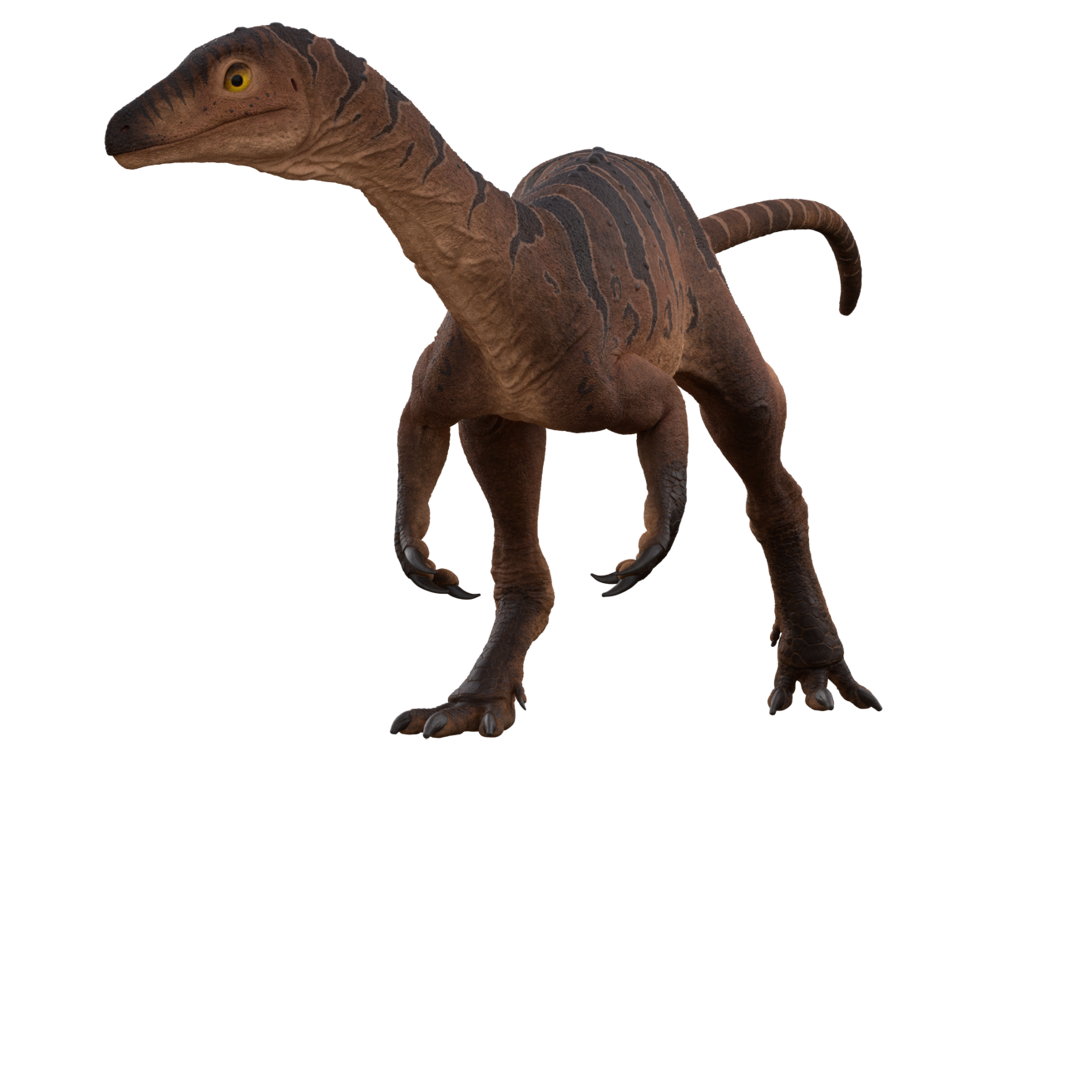When Sauropodomorphs Weren't Herbivores
With a name meaning "all-eater" one might expect something huge and voracious, yet this sauropodomorph was less than 2 meters long. However, true to its name, and contrary to most later sauropodomorphs, this creature had an omnivorous diet.
Overview: Almost all sauropodomorphs were herbivores, but they evolved from theropod-like ancestors which ate meat or insects. Discovered in the early 21st Century by Ricardo N. Martínez in the Late Triassic Ischigualasto Formation of Argentina, the small (less than 2 meters) sauropodomorph Panphagia is one of the most primitive known sauropodomorphs and is one of the few sauropodomorphs thought to be omnivorous, thus offering to illuminate our understanding of the transition between carnivory and more theropod-like animals, to herbivory and more traditionally sauropodomorphic creatures.
Discovery: Panphagia protos was discovered in Valle Pintado, Ischigualasto Provincial Park, San Juan Province, Argentina, in rocks of the Late Triassic (Carnian) Ischigualasto Formation, by Argentine paleontologist Ricardo N. Martínez in 2006. Due to the fossil being found in a rock layer with stratigraphic equivalence to a layer of volcanic ash, Panphagia can be reliably dated radiometrically to about 131.4 million years ago. It was named in 2009 by Ricardo N. Martinez and Oscar A. Alcober. The name Panphagia is Greek, meaning “all-eater” (pan = “all”, phagein= “to eat”). The species name protos is also Greek, meaning “the first” in reference to Panphagia’s basal position within Sauropodomorpha. The holotype is the only known specimen of Panphagia, and consists of part of the skull, some of the vertebrae, and portions of the pectoral girdle, pelvic girdle, and hindlimbs.
Evolution and Description: Panphagia was a member of the family Saturnaliidae, which has been found by many studies to be among the most basal of all sauropodomorphs. Panphagia is both one of the earliest sauropodomorphs as well as one of the earliest known dinosaurs generally. That sauropodomorphs and other dinosaur clades were already in existence 131 million years ago shows how rapidly dinosaurs diversified shortly after they first appeared. Panphagia differs greatly from later sauropodomorphs, even from the just slightly more recent Unaysaurus. It was lightly built and bidedal, and at a glance it would probably have looked more like an early theropod than a sauropodomorph. And it was small, only 1.30 meters (4.3 ft) in length, though the holotype may not have been a fully grown animal so it is possible that they could have grown slightly bigger. Like other dinosaurs, it was probably warm-blooded, and like other saurischians (“lizard-hipped” dinosaurs, theropods and sauropodomorphs) it likely had an avian-style respiratory system, making it a more efficient breather compared to other animals, like the mammal ancestors with which it shared its environment. The teeth of Panphagia, which indicate an omnivorous diet, were longer in the front and shorter in the back. Its back teeth were leaf shaped with strong serrations.
Ecology: Panphagia lived in a rich floodplain environment with abundant plants, including ferns, horsetails, and cycads, and towering above them, relatives of ginkgoes, monkey puzzles, and redwoods. The climate was lush enough to support these plants, but rain was highly seasonal, and there was probably a distinct wet and dry season. Panphagia lived in the shadow of large herbivores like the dicynodonts Ischigualastia and Jachaleria, the herbivorous cyndont Exaeretodon, and the aetosaur (an armored herbivorous relative of crocodiles) Aetosauroides. Small herbivores would have included rhynchosaurs and the enigmatic dinosaur-like silesaurids. Small predators included cynodonts, the early crocodylomorph, Trialestes, and the early dinosaurs Eoraptor and Eodromeus. Larger predators included the larger theropod Herrerasaurus, and the giant Saurosuchus, a “rausuchian” terrestrial relative of crocodiles. Panphagia occupied a role as omnivore. It could probably be seen eating ferns and other plants alongside the dicynodonts, as well as catching insects and small animals like early relatives of lizards, and probably scavenging carrion left by larger predators. Its small size meant that it was probably prey for many animals as well, including Herrerasaurus and Saurosuchus. Near waterways, Panphagia also would have had to be wary of semiaquatic predators like the large temnospondyl amphibians Promastodonsaurus and Pelorocephalus and the crocodile-like proterochampsid reptile Proterochampsa.
Extinction and Legacy: Panphagia and the saturnaliid sauropodomorphs didn’t last very long. As the Triassic continued onward, dinosaurs continued to radiate into new forms which became more distinct from each other. Generalist omnivores like Panphagia were largely phased out in favor of more specialized forms. Theropods retained the basic dinosaurian body plan and fine-tuned it to better suit their predatory lifestyles. Meanwhile, sauropodomorphs became strict herbivores and got big, eventually taking on the form we are more familiar with. And thanks to Panphagia, we have a better idea of how that transition happened. The skeleton of Panphagia is housed in the Instituto y Museo de Ciencias Naturales, in San Juan, Argentina.
Panphagia FAQ
Panphagia size / How big was Panphagia?
See height, weight, and length.
Panphagia height / How tall was Panphagia?
Panphagia was around 0.23 meters (0.76 ft) tall.
Panphagia weight / How much did a Panphagia weigh?
Panphagia probably weighed around 7.8 kg (17.2 lbs).
How long was Panphagia?
Panphagiagrew 1.30 meters (4.3 ft) in length.
What did Panphagia eat?
As its name suggests, Panphagia was not a picky eater, probably consuming plants, insects, small animals, and carrion.
What is Panphagia's closest living relative?
Like all dinosaurs, the closest relatives of Panphagia are the only surviving lineage of dinosaurs today, the birds. Crocodilians, while not dinosaurs themselves, are also more distant cousins of dinosaurs.
Panphagia family members / Panphagia family / What kind of dinosaur was Panphagia?
Panphagia was an early sauropodomorph (sauropods and their earlier relatives), or “prosauropod”, in the family Saturnaliidae, making itone of the most basal of all sauropodomorphs.
Where did Panphagia live? / Where was Panphagia found?
Panphagia lived in what is now Argentina!
When did Panphagia live?
Panphagia lived about 231 million years ago during the Late Triassic Period.
What does Panphagia mean? / Panphagia name meaning
Panphagia means “All-Eater” in reference to its omnivorous diet.

